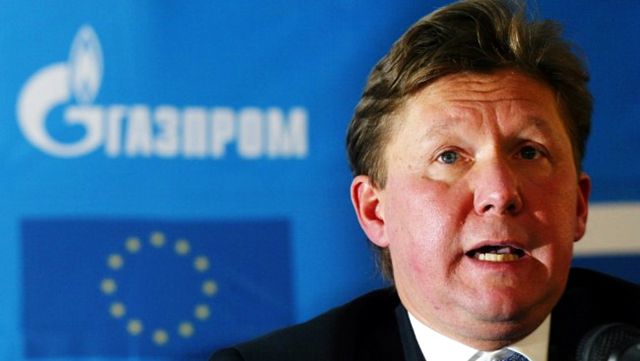
Gazprom Play Map Games in the Balkans With South Stream
Publication: Eurasia Daily Monitor Volume: 7 Issue: 120
By:

Romania’s economy ministry announced on June 16 that it had persuaded Gazprom to include Romania, instead of Bulgaria, in South Stream and other gas projects on Romanian territory. The Romanian ministry sounded self-congratulatory about replacing Bulgaria, following Sofia’s suspension of South Stream and other Russian projects involving Bulgaria (EDM, June 14, 18).
Moscow, however, is merely playing Romania, Bulgaria, and other Balkan countries off against each other, constantly changing South Stream’s geography while delaying its implementation. As always in these negotiations, the Russian side does not identify any gas resources or investment funding behind the South Stream project.
Just two days after Gazprom’s nod to Bucharest, Russian President, Dmitry Medvedev, winked back to Sofia during the St. Petersburg Economic Forum. Meeting with international oil and gas company executives, Medvedev urged Bulgaria to move quickly and complete the negotiations with Gazprom for the South Stream project on Bulgarian territory. Medvedev cited a verbal agreement just reached with Macedonia to include that country in South Stream via Bulgaria (Interfax, June 18).
Indeed, on June 17-18, Macedonia’s President, Gjorge Ivanov, and Deputy Prime Minister, Zoran Stavreski, held talks with President Medvedev and Gazprom CEO, Aleksei Miller, on the possible construction of a South Stream branch from Bulgaria into Macedonia. The sides agreed to create a working group for preparation of a feasibility study and a follow-up project agreement. Gazprom will send an expert team to start mapping out a pipeline route across Macedonia from Bulgaria. Gasification of Macedonia’s localities is included in the proposed package deal. There is no word on Gazprom financing, however. Macedonia has just recovered $60 million in Soviet-legacy Russian debt, and is now supposed to invest this sum (plus another $15 million it is barely scraping) into Gazprom’s $300 million project (Interfax, June 17, 18; MIA, June 17, 18, 19).
Also during the St. Petersburg Economic Forum, Gazprom promised to Serbia Gas CEO, Dusan Bajatovic, to complete the feasibility study for South Stream’s Serbian section by September (Dnevni Avaz, June 21). This can only make sense, however, if the starting premise remains a pipeline into Serbia from Bulgaria. All planning work since early 2009 (assuming that it has actually been conducted) proceeded from the premise. Feasibility of South Stream entering Serbia from Romania cannot be discussed without determining a Romanian route first, but that is nowhere in sight.
During the St. Petersburg event, Gazprom Vice-President, Aleksandr Medvedev, discussed with Bosnian Serb Prime Minister, Milorad Dodik, the proposed construction of a South Stream branch into Bosnia-Herzegovina’s Serb Republic (Bosnian Serb TV, June 18; Oslobodenje, June 21). This proposal has all along been linked to South Stream’s main line entering Serbia from Bulgaria.
On June 18 in Moscow, Prime Ministers, Vladimir Putin and Jadranka Kosor, conferred on Russian oil and gas projects in Croatia, including a branch line from the main South Stream pipeline. A range of options exist for South Stream to enter Croatia, but no feasibility study is known to have been initiated. Nevertheless, Kosor promised that the Croatian parliament would soon pass a law authorizing the South Stream project on Croatia’s territory; and that the country’s pipeline operator, Plinacro, will soon form a joint project company with Gazprom (Jutarnji List, June 21).
As a net result, all these Russian statements regarding Bulgaria (not taking Sofia’s “no” for an answer), Macedonia, Serbia, and Bosnia-Herzegovina’s Serb Republic are incompatible with the promise (if it was such) to re-direct South Stream via Romania, instead of Bulgaria.
Furthermore, Russia is adding to the ranks of South Stream’s putative customers for Russian gas, despite Russian production facing stagnation and shortfalls in the years ahead. Stung by Bulgaria’s repudiation of South Stream (and two other Russian projects), Moscow is also concerned that an insolvent Greece may be disabled from participating in South Stream (Nezavisimaya Gazeta, June 17). This consideration may partly explain Gazprom’s June 16 proposal to bypass Bulgaria altogether, and thus Greece, re-redirecting South Stream via Romania to Central Europe.
Moscow also plays on Bucharest’s unrequited dream of a Constanta-Trieste oil pipeline across Romania. To feed those unrealistic hopes, Gazprom suggests a possibility of laying South Stream’s Romanian section along the would-be oil route from Constanta to the Romanian-Serbian border (Kommersant, June 17).
Manipulation of South Stream’s economics and geography is turning this Russian project into a shell game. These tactics aim mainly to forestall progress on the EU-backed Nabucco project. Moscow hopes to derail EU funding decisions that are due before the year’s end for Nabucco. Artificial publicity around South Stream can inhibit private-sector investment commitments to Nabucco or even (in Gazprom’s ideal scenario) erode EU funding to the Nabucco project.
Orchestrating high-level discussions around South Stream also serves to threaten Ukraine with this bypass project. Vastly overestimating South Stream’s viability, Kyiv (and Donetsk) fear that South Stream could doom Ukraine’s gas transit system to redundancy. To forestall that imagined threat, the Ukrainian government would cede control of its gas transit system to Gazprom.
Variations on South Stream’s geography and supply volumes can be discussed indefinitely. They serve to play off Balkan countries against each other, foster artificial interest in the project, intimidate Ukraine, justify at the same time the postponement of construction, and thus cover up Russia’s inability to commit gas and funding to this project.




